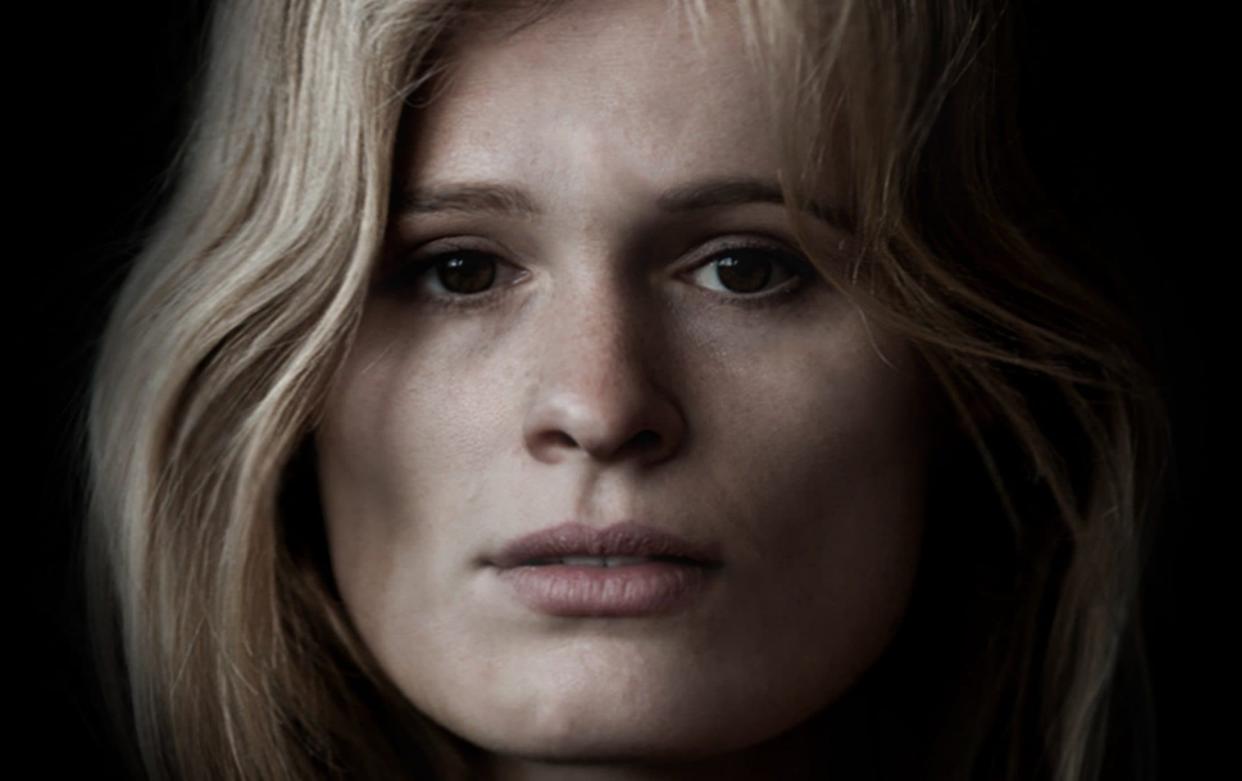'Beautiful' face of medieval woman brought back to life after 700 years

The beautiful face of a mysterious medieval woman has been revealed for the first time in 700 years, after scientists used 3D digital reconstruction techniques to bring her back from the dead.
The unknown woman, who died in her 20s and was placed on a bed of seashells, was found during vault renovations at the ruined Whithorn Priory site in Dumfries and Galloway, Scotland, in the 1950s.
Experts from the University of Bradford used facial reconstruction and computer technology to create a lifelike animation of the woman, who may have visited the priory on a pilgrimage.
Dr Christopher Rynn, a craniofacial anthropologist and forensic artist, said her skull was the most symmetrical he had ever seen, suggesting she was extremely beautiful, and probably enjoyed a healthy and trauma-free upbringing.
“When the face is growing throughout childhood, throughout teenage years, it doesn’t grow symmetrically simultaneously. It grows left and right, kind of like walking," he said.
“So if there’s any kind of illness, or even just the kind of emotional trauma that could stop you from sleeping and eating for any length of time, then it’s going to throw the symmetry of the face off.
“The more illness and trauma in childhood, the less symmetrical the adult face will end up.”
Burial suggests high status
The woman was buried in a stone coffin set in front of the high altar, suggesting she was of high status, despite dying so young.
Her coffin was beside the grave of Bishop Walter who was known to have worked in the diocese of York, becoming bishop of Whithorn in 1209. He was given an elaborate burial, and was interred with a gold finger ring and wooden crozier - or crook-headed staff - to represent his high office.
A third skeleton of a man with a cleft-palate was also found in a stone coffin nearby. All three skulls underwent facial reconstruction as part of the ongoing Cold Case Whithorn project, which is delving into the lives of those buried in the priory.

Dr Shirley Curtis-Summers, a University of Bradford bio-archaeologist, said: “The woman was in her early 20s and was buried on a bed of shells.
“There may be some religious significance to that considering scallop shells were associated with pilgrimage at the site.”
During the medieval era, many pilgrims wore scallop shells around their necks or attached to their back, to mark them out on their journey. The symbol can still be found on pilgrimage trails today, such as the Camino de Santiago in Spain.
Experts hope to discover what kind of food the woman ate
Pilgrims travelled to Whithorn because it held the tomb of St Ninian, an 8th century missionary who converted the Picts to Christianity.
The Venerable Bede wrote that Ninian had been instructed at Rome, and was unusual in building his church from stone.
Whithorn was also the birthplace of the first known Christian in Scotland, Latinus of Whithorn, who lived around 450AD, and who is mentioned on the Latinus Stone - Scotland’s oldest surviving Christian memorial.
Experts are planning to carry out isotope analysis on the women's skeleton in the near future to confirm the food that she ate. If it turns out she had a diet high in fish, similar to the bishop, it will confirm that she was from a high-status family.
Dr Curtis-Summers added: “This project is of huge significance, because while we can never tell the full story of the lives of these medieval people, being able to reconstruct their diet, mobility, and now their faces, allows us to delve into their past and come face to face with them.”

 Yahoo Movies
Yahoo Movies 
